Italy’s southern regions of Puglia and Calabria are gems waiting to be discovered. Both offer stunning coastlines, rich history, and mouthwatering cuisine. But which one should you pick for your next Italian adventure?
Puglia, Italy’s heel, is more developed for tourism and easier to navigate. Its whitewashed towns, trulli houses, and olive groves create a picturesque landscape.
Calabria, Italy’s toe, is wilder and less explored. It boasts rugged mountains, pristine beaches, and a sense of authenticity that’s hard to find elsewhere.
Foodies will be in heaven in both regions. Puglia is famous for its orecchiette pasta and burrata cheese, while Calabria offers spicy ‘nduja sausage and sweet red onions from Tropea. Beach lovers can’t go wrong either way – from the crystal-clear waters of Tropea in Calabria to the long sandy stretches of Salento in Puglia, there’s a perfect spot for everyone.
Key Takeaways
- Puglia offers easier travel and iconic sights, while Calabria provides a more off-the-beaten-path experience.
- Both regions boast beautiful beaches, delicious food, and rich cultural heritage.
- Travelers can expect warm hospitality and lower prices compared to more touristy parts of Italy.
Historical Overview
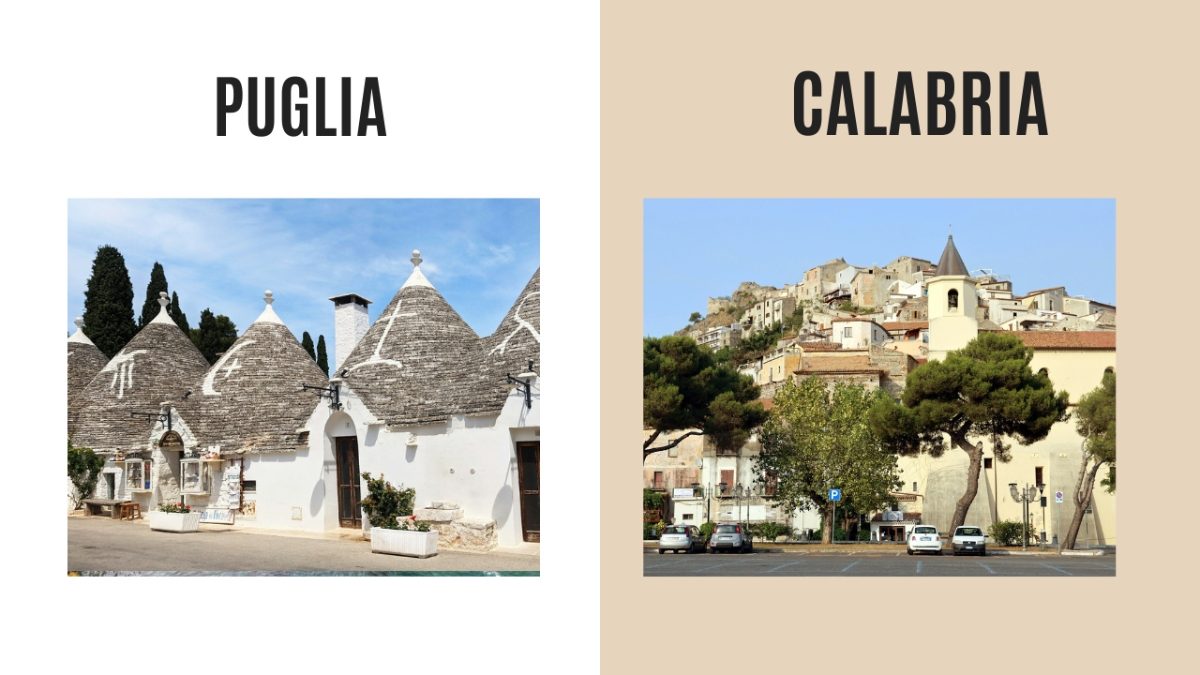
Puglia and Calabria have rich histories stretching back thousands of years. These southern Italian regions were shaped by diverse civilizations, leaving a fascinating cultural legacy.
Unique Heritage of Puglia

Puglia’s story begins with ancient Greek settlers who founded cities like Taranto. The Romans later took control, building the Via Appia that connected the region to Rome. After the fall of the empire, Puglia saw Byzantine, Norman, and Spanish rule.
Each left their mark. You’ll spot Byzantine churches, Norman castles, and Baroque architecture from the Spanish period.
The iconic trulli houses in Alberobello date back to the 16th century. These cone-roofed limestone dwellings are now a UNESCO World Heritage site.
Puglia was also a key stop on medieval pilgrimage routes to the Holy Land. Many stunning Romanesque cathedrals sprang up as a result.
Calabria’s Ancient Roots
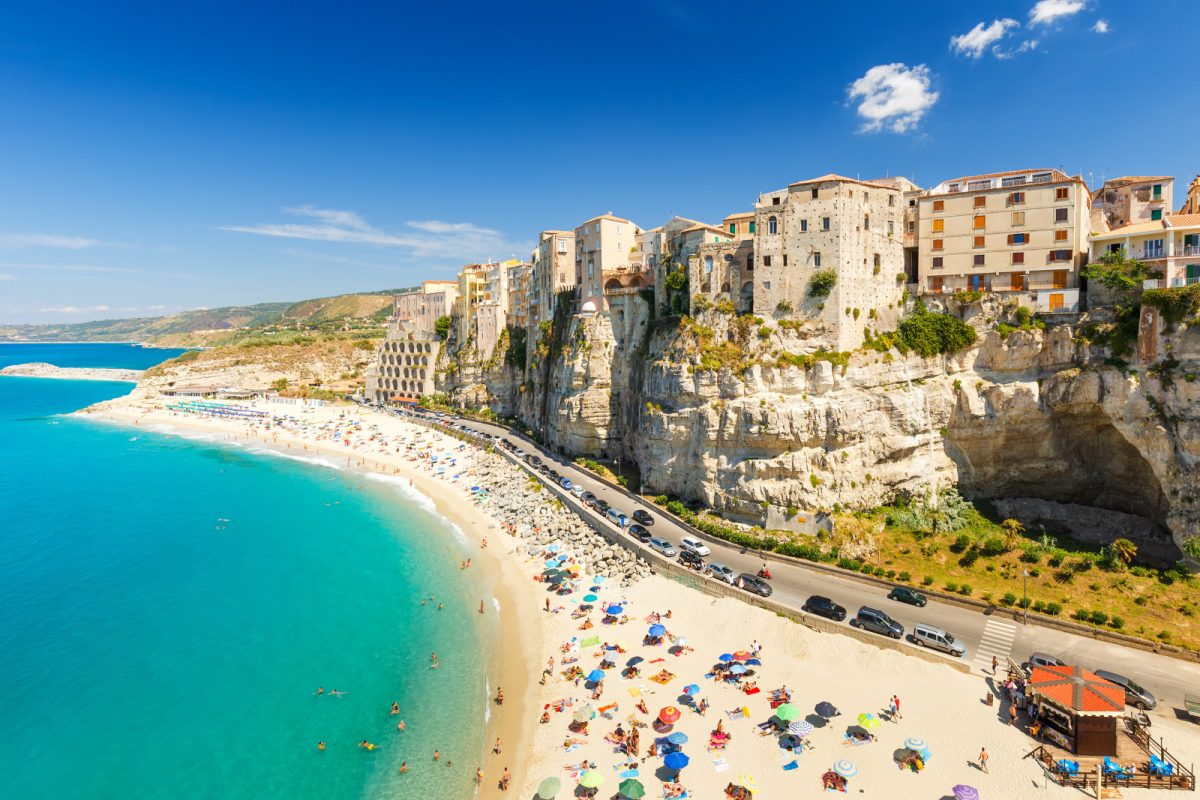
Calabria boasts an even older past. Greek colonists arrived as early as the 8th century BC, establishing powerful city-states like Kroton. The region became known as Magna Graecia – “Greater Greece.”
Roman conquest came later, in the 3rd century BC. Ruins from this era, like the theater in Scolacium, can still be seen. After Rome’s fall, Calabria was ruled by Byzantines, Arabs, and Normans.
The Middle Ages saw the rise of powerful feudal lords. They built imposing castles that dot the landscape today. Calabria’s rugged terrain helped preserve its unique culture and dialects over the centuries.
Cultural Highlights
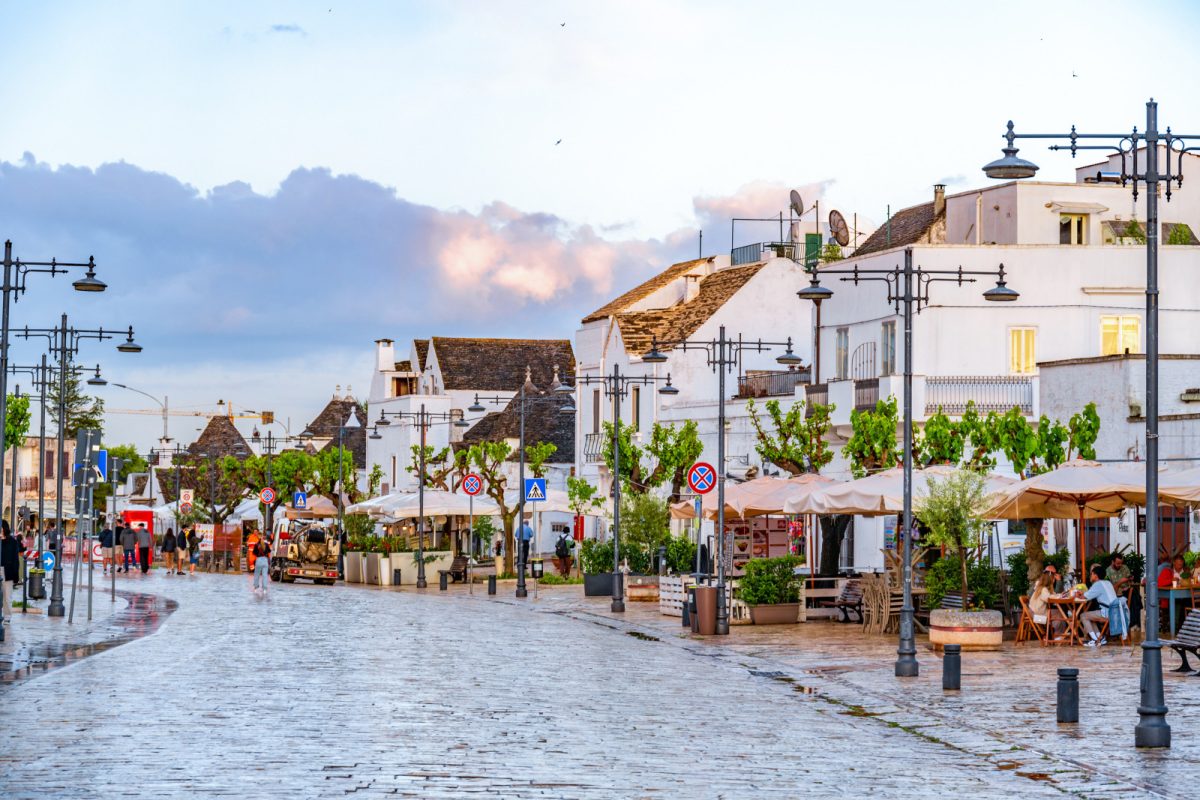
Puglia and Calabria offer rich cultural experiences that showcase southern Italy’s heritage. From unique architecture to age-old traditions, these regions captivate visitors with distinct charms.
Puglia’s Trulli and Towns
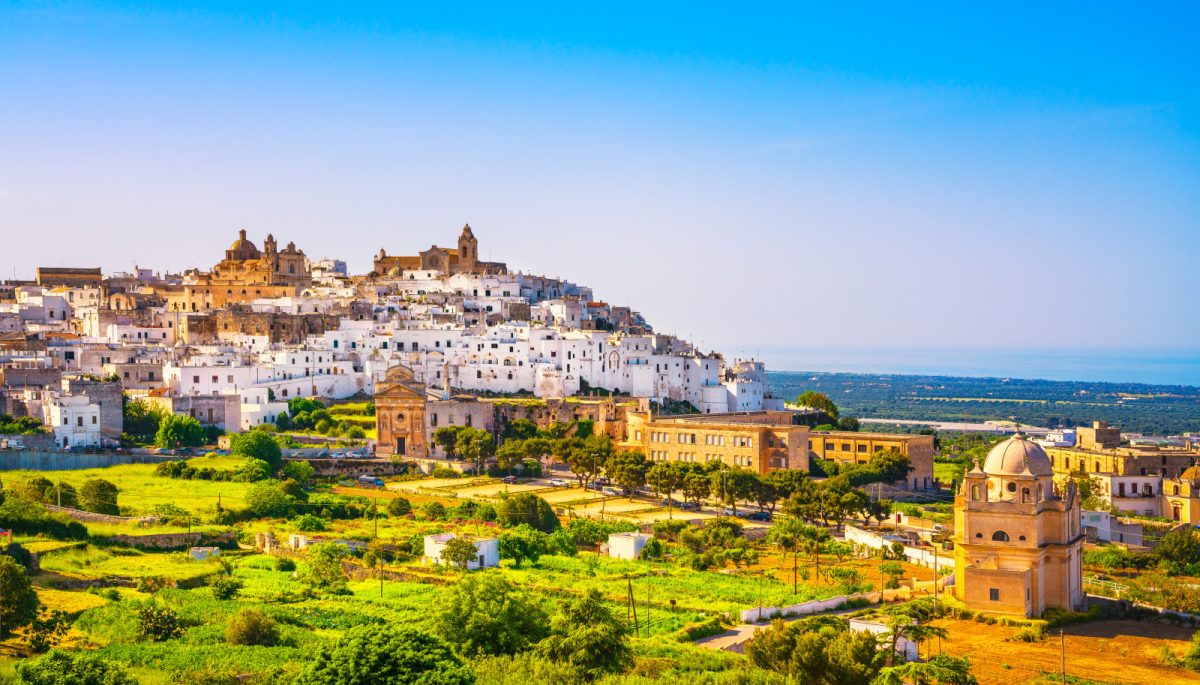
Alberobello’s trulli are a must-see in Puglia. These cone-shaped stone houses look like they’re straight out of a fairytale.
Wander the narrow streets and snap photos of the 1,500 trulli. To avoid crowds, visit in the early morning or late afternoon.
The white-washed towns of Ostuni and Locorotondo are picture-perfect. Ostuni’s hilltop old town offers stunning views of olive groves stretching to the sea. Locorotondo charms with its circular layout and flower-filled balconies.
Lecce, known as the “Florence of the South,” dazzles with its Baroque architecture. The city comes alive at night when the golden limestone buildings are lit up.
Calabria’s Traditions and Festivals
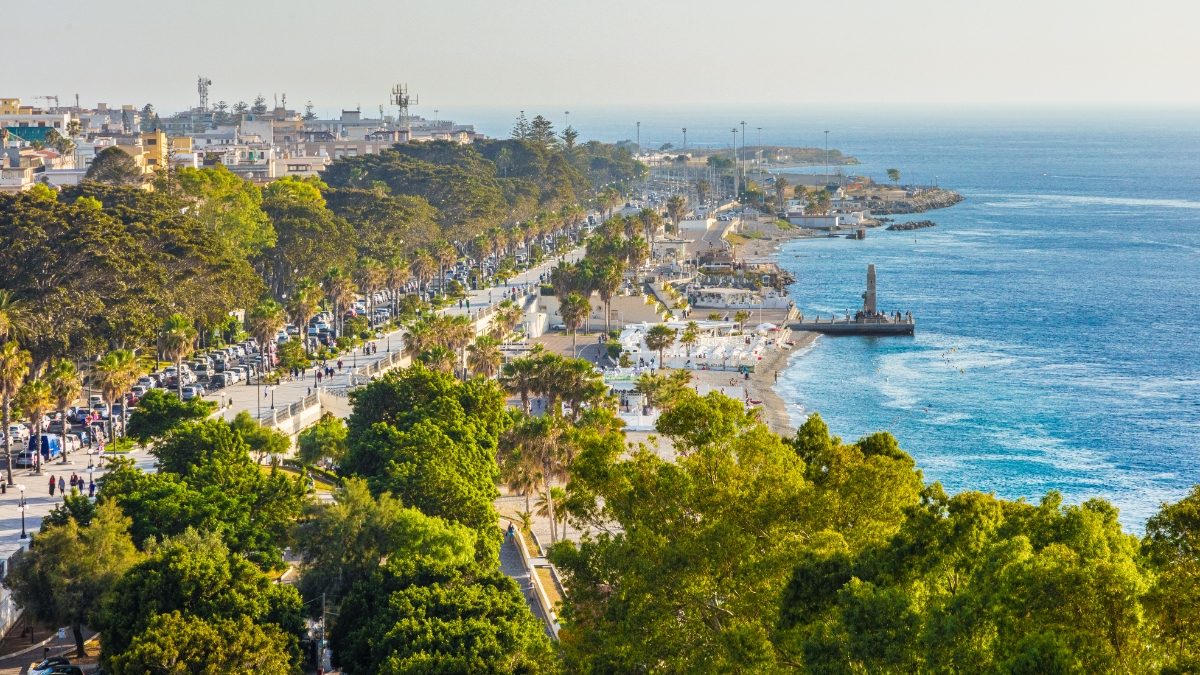
Calabria keeps old customs alive through lively festivals. The Varia di Palmi, held every August, is a UNESCO-recognized event. Locals carry a huge float through town in a spectacular procession.
Reggio Calabria is home to the famous Bronzi di Riace. These ancient Greek bronze statues are a marvel to behold.
The museum is open daily except Mondays. Tickets cost €8.
The hilltop towns of Gerace and Stilo offer glimpses into Calabria’s past. Gerace’s Norman cathedral is impressive. Stilo’s Byzantine church, La Cattolica, sits dramatically on a hillside.
Calabrian food festivals celebrate local specialties. Try spicy ‘nduja sausage at the Festa del Peperoncino in Diamante each September.
See Related: Northern Italy vs Southern Italy: A Comprehensive Comparison
Geography and Nature
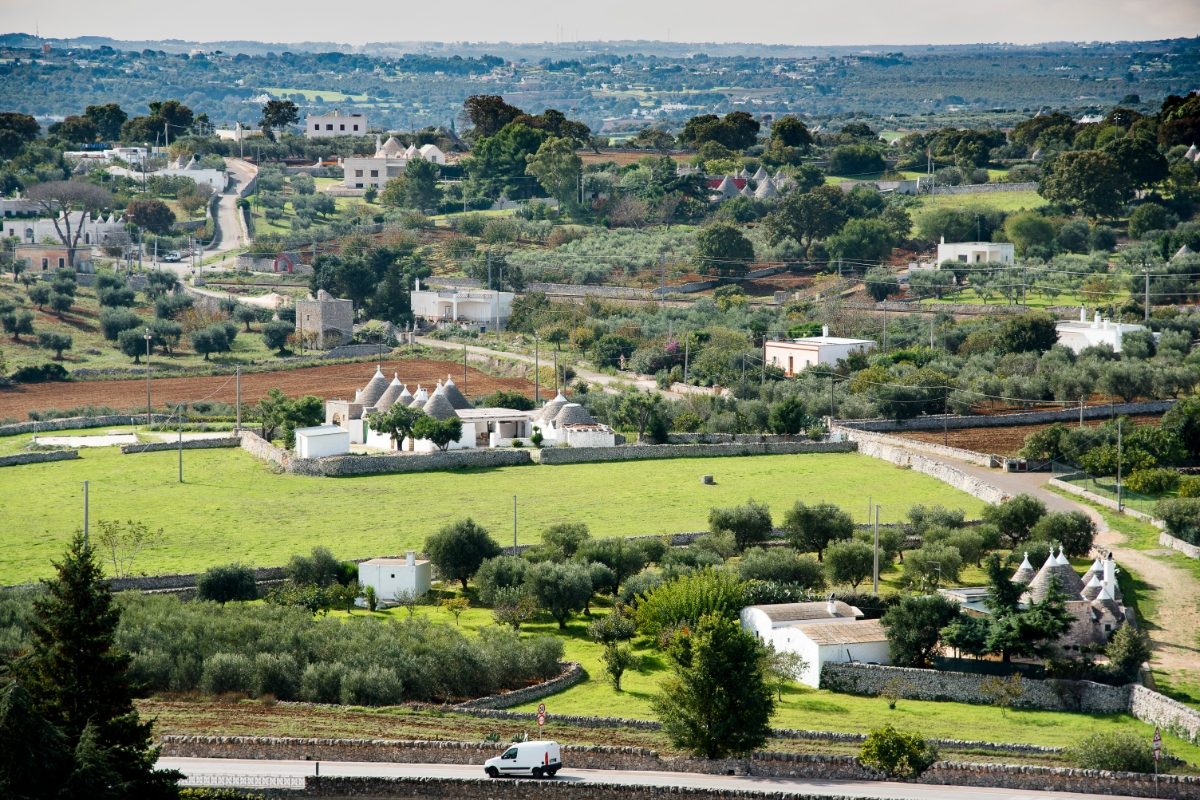
Italy’s southern regions of Puglia and Calabria offer strikingly different landscapes. Puglia charms with its gentle coastlines and rolling hills, while Calabria impresses with dramatic mountains and rugged shores.
Puglia’s Coastal Beauty

Puglia boasts nearly 800 km of pristine coastline. The region’s beaches are a big draw, with powdery white sand and crystal-clear turquoise waters. Porto Cesareo has some of the best beaches, with shallow waters perfect for families.
The Gargano Peninsula in northern Puglia is a natural wonderland. Its forested hills drop dramatically to meet the sea, creating hidden coves and grottoes. Boat tours from Vieste are a great way to explore the coastline.
Inland, Puglia’s landscape is dotted with olive groves and vineyards. The Valle d’Itria charms visitors with its rolling hills and iconic trulli houses, unique to the area.
Calabria’s Rugged Terrain
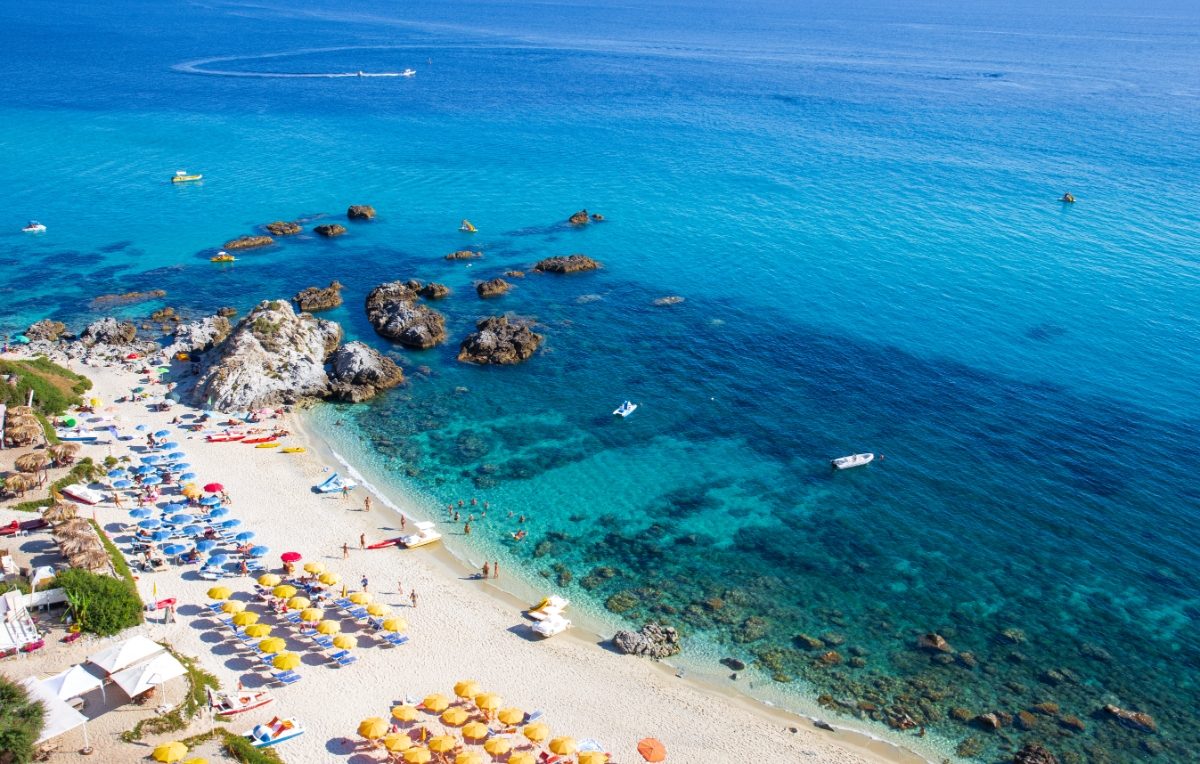
Calabria’s geography is wild and mountainous. The Aspromonte and Sila mountain ranges dominate the interior, offering fantastic hiking trails and ski resorts in winter.
The coastline is just as dramatic. Cliffs plunge into the sea, creating secluded beaches and coves.
Tropea is the jewel of Calabria’s coast. Its historic town sits atop a cliff, overlooking a perfect crescent beach.
Capo Vaticano, near Tropea, is another stunning spot. Its lighthouse offers sweeping views of the Tyrrhenian Sea. The nearby beaches are some of Italy’s best, rivaling the famous Amalfi Coast.
Scilla is a picturesque fishing village at the foot of a cliff topped by an ancient castle. Its beach, Marina Grande, is a slice of paradise.
Gastronomic Delights
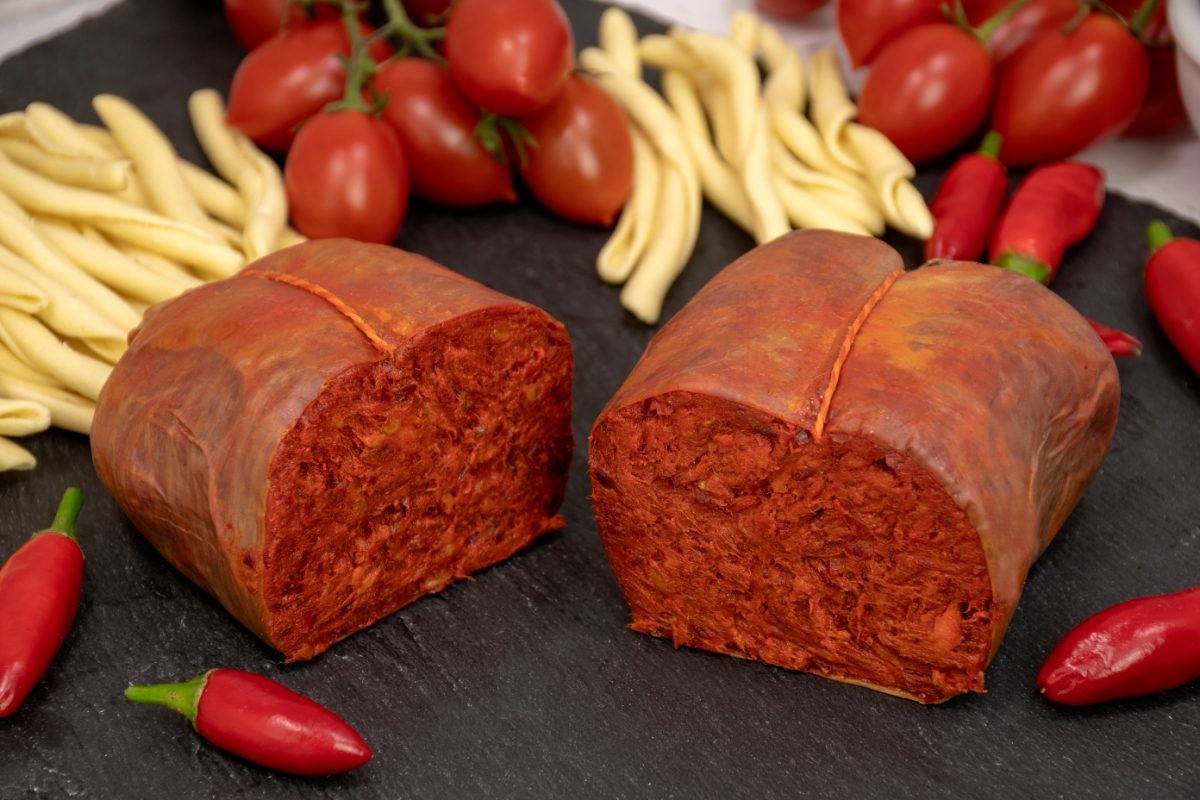
Puglia and Calabria offer mouthwatering culinary experiences showcasing the best Southern Italian cuisine. From fresh seafood to hearty pasta dishes, these regions delight the taste buds with their unique flavors and traditional recipes.
Flavors of Puglia
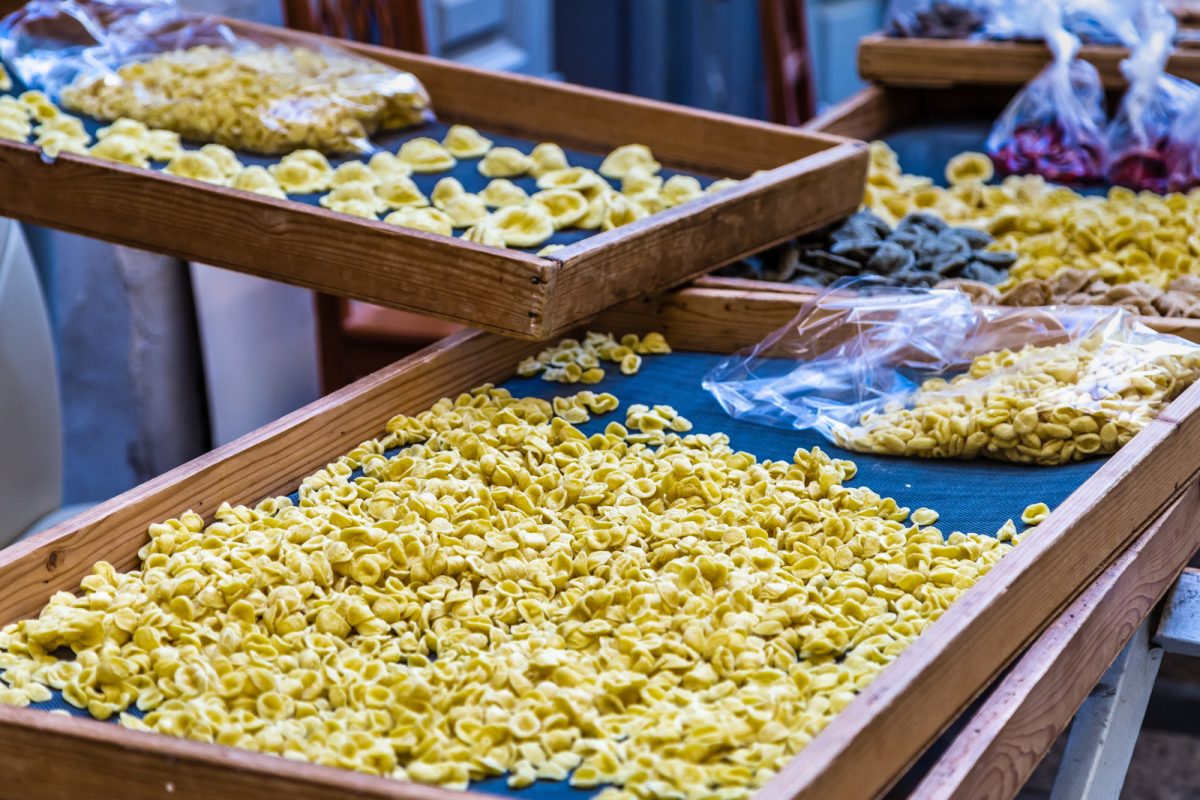
Puglia’s cuisine celebrates simplicity and high-quality ingredients. Orecchiette pasta, shaped like little ears, is a local favorite, often served with broccoli rabe or a rich tomato sauce. The region’s olive oil is world-renowned, and many farms offer tastings and tours.
Seafood lovers will enjoy fresh catches from the Adriatic and Ionian seas. Try the octopus carpaccio or grilled seabream for a true taste of the coast. Burrata, a creamy cheese from Andria, pairs perfectly with crusty bread and ripe tomatoes.
Don’t miss Puglia’s famous street food. Panzerotti, fried dough pockets filled with tomato and mozzarella, are a delicious snack. Pasticciotto, a sweet pastry filled with custard, is a must-try dessert.
Calabrian Cuisine Secrets
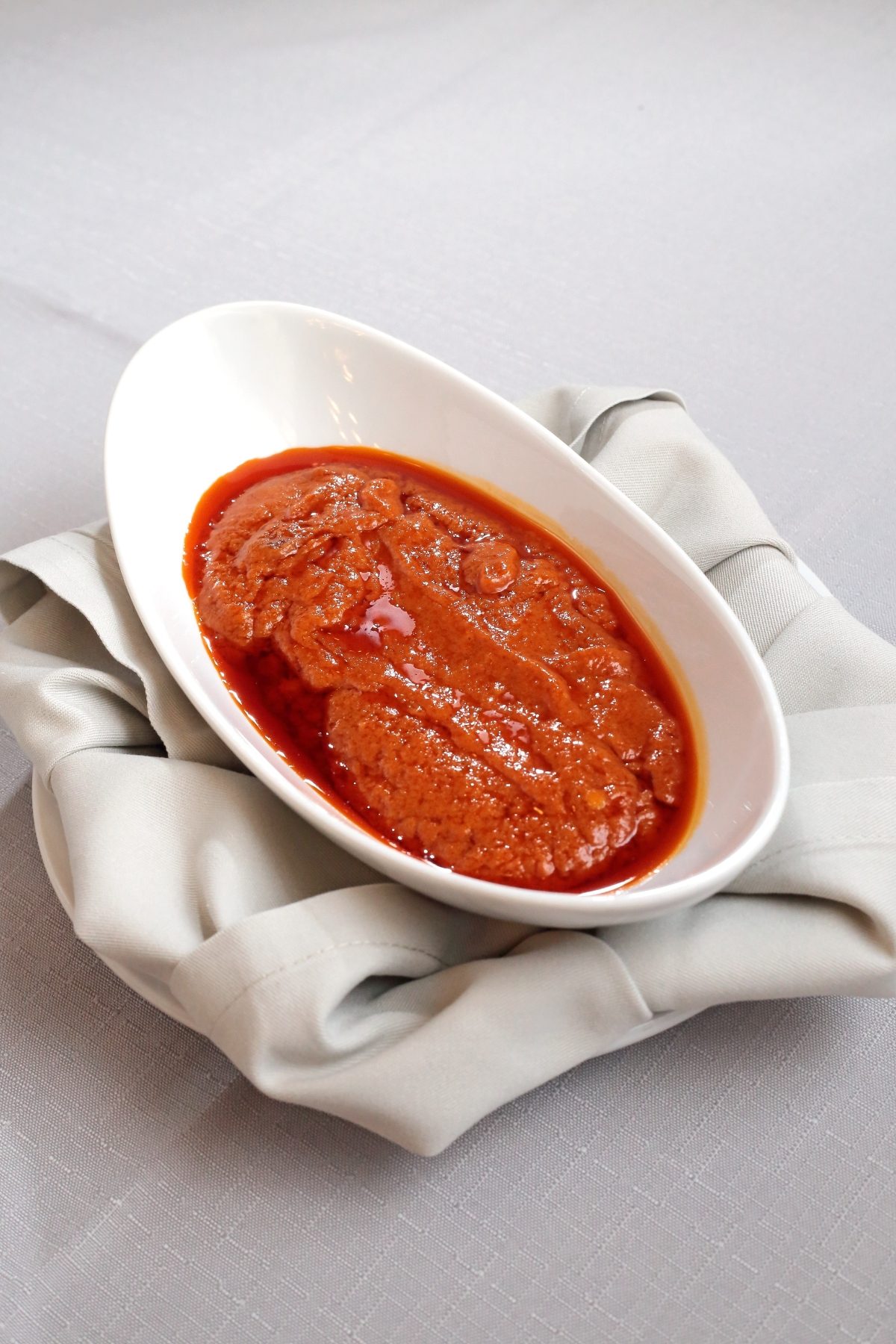
Calabrian food packs a spicy punch, thanks to the region’s famous peperoncino chili peppers. ‘Nduja, a spicy spreadable sausage, adds flavor to pasta dishes and bruschetta. The region’s signature pasta, fileja, is often served with a rich pork ragu.
Seafood is also a staple of Calabrian cuisine. A local specialty is swordfish alla ghiotta, cooked with olives, capers, and tomatoes. For a unique taste, try sardella, a spicy fish paste often spread on bread.
Bergamot, a citrus fruit grown almost exclusively in Calabria, flavors everything from gelato to liqueurs. For a sweet taste of Calabria, end your meal with Tartufo di Pizzo, a decadent ice cream treat with a chocolate core.
See Related: Two Weeks in Italy Itinerary: The Perfect Family Adventure
Tourism and Travel Experiences
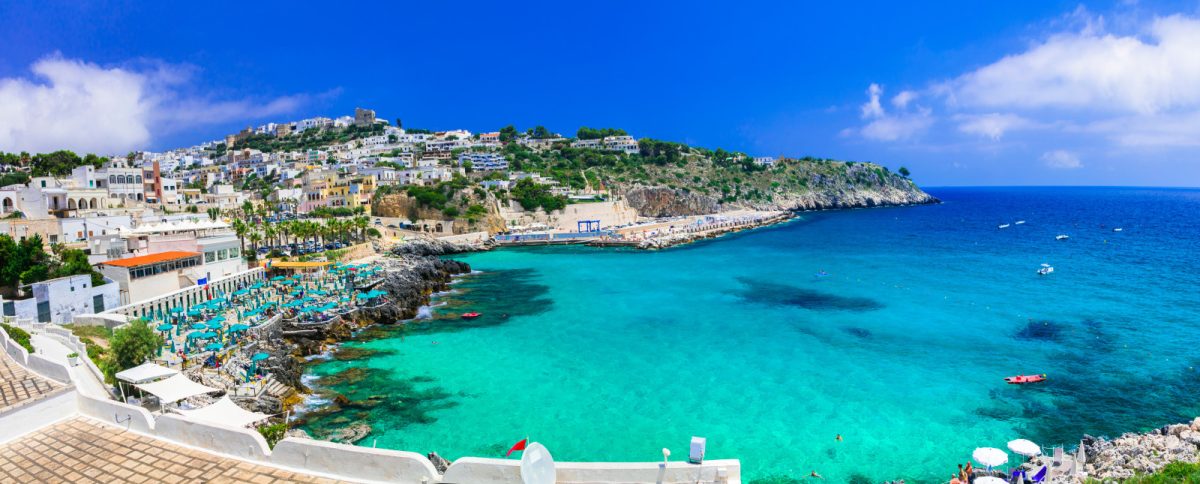
Italy’s southern regions offer unique charms to visitors. Puglia and Calabria boast beautiful beaches, historic sites, and delicious cuisine, but each has a distinct flavor.
Puglia’s Attractions and Accommodations
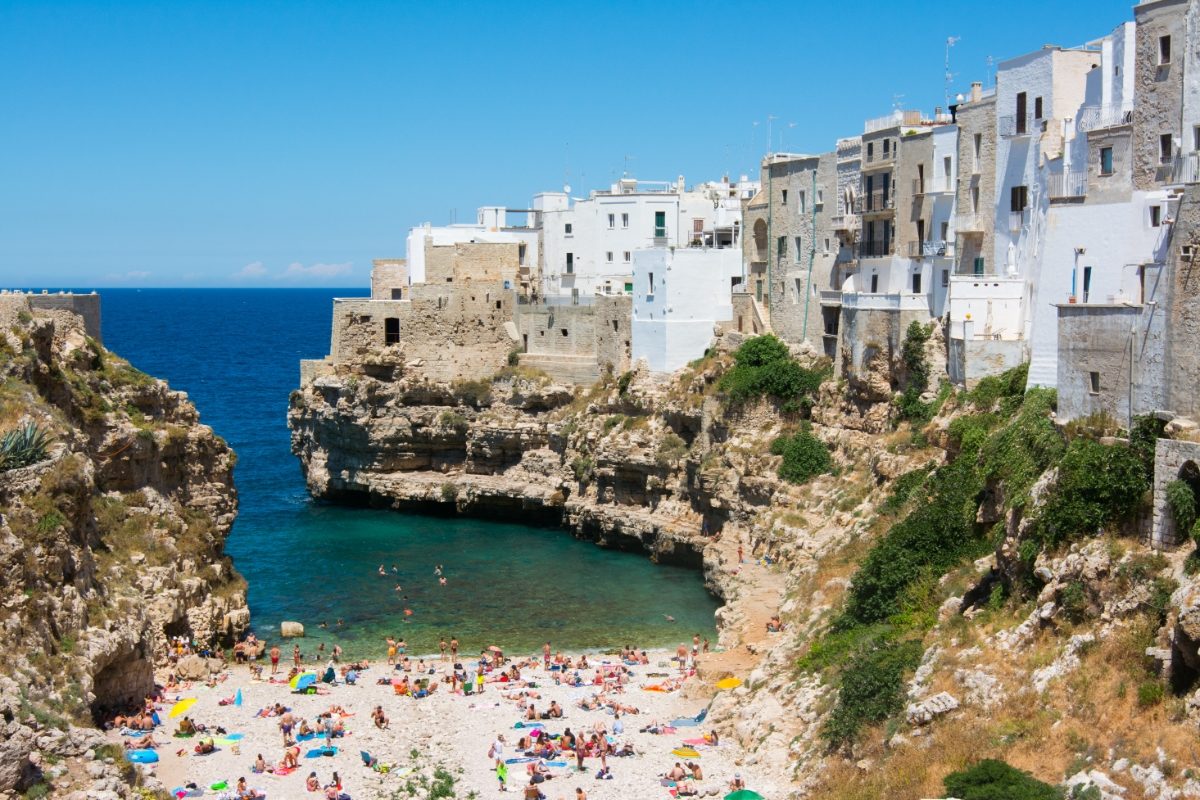
Puglia draws travelers with its whitewashed towns and azure coastline. Lecce, known as the “Florence of the South,” wows visitors with its ornate Baroque architecture. The Trulli houses of Alberobello, with their conical roofs, offer a fairy-tale experience.
Beach lovers flock to Polignano a Mare, where dramatic cliffs meet crystal-clear waters. For a taste of local life, tourists can join olive oil tastings or cooking classes in charming masserie (farmhouses).
Accommodations range from luxury resorts to cozy B&Bs. A night in a converted Trullo can cost €100-200. Summer sees crowds and higher prices, so visiting in spring or fall is ideal.
Calabria’s Unique Tour Offerings
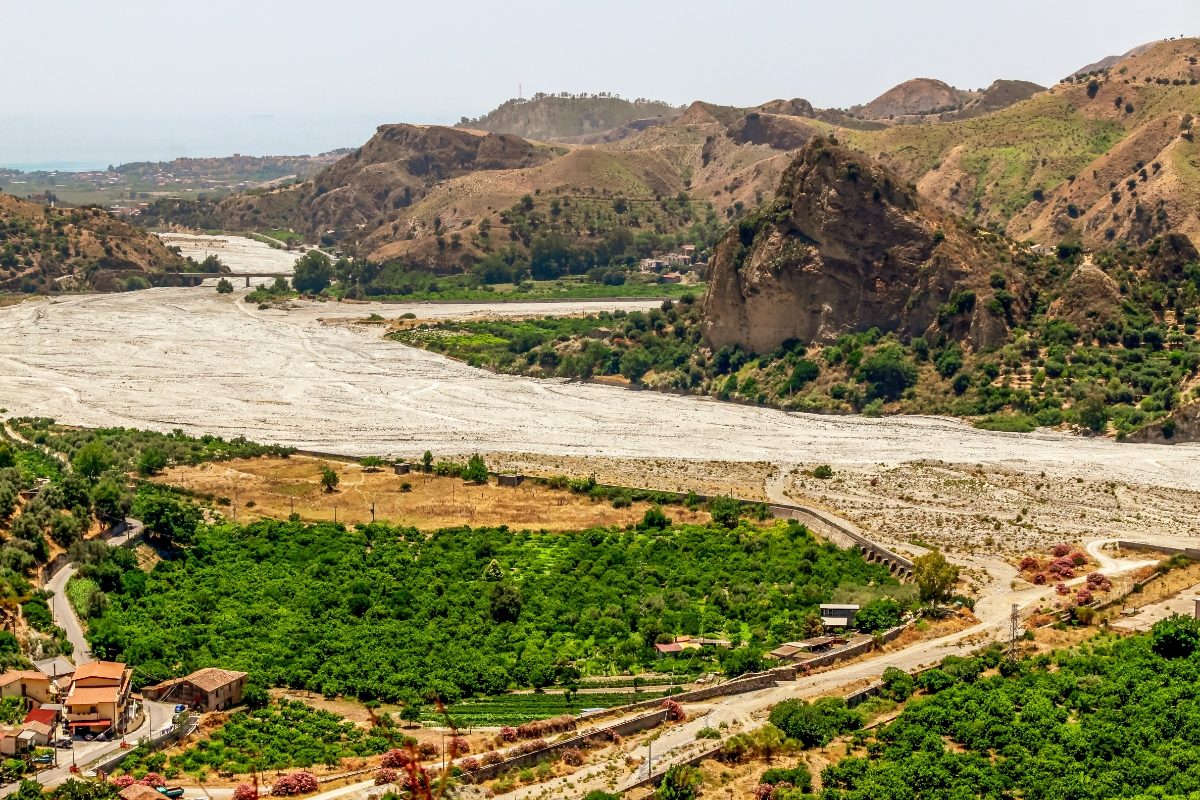
Calabria appeals to adventurers seeking off-the-beaten-path experiences. The region’s rugged coastline boasts some of Italy’s best beaches, like Tropea, with its turquoise waters and dramatic cliffs.
Calabria Tours often include visits to hilltop villages like Gerace, where time seems to stand still. Aspromonte National Park offers hiking trails with breathtaking views of the Ionian and Tyrrhenian seas.
Food tours are a must, featuring spicy ‘nduja sausage and local wines. Accommodation options include agriturismo (farm stays) for around €60-100 per night. Calabria is less touristy than Puglia, making for a more authentic experience, especially outside of August.
Leisure and Activities
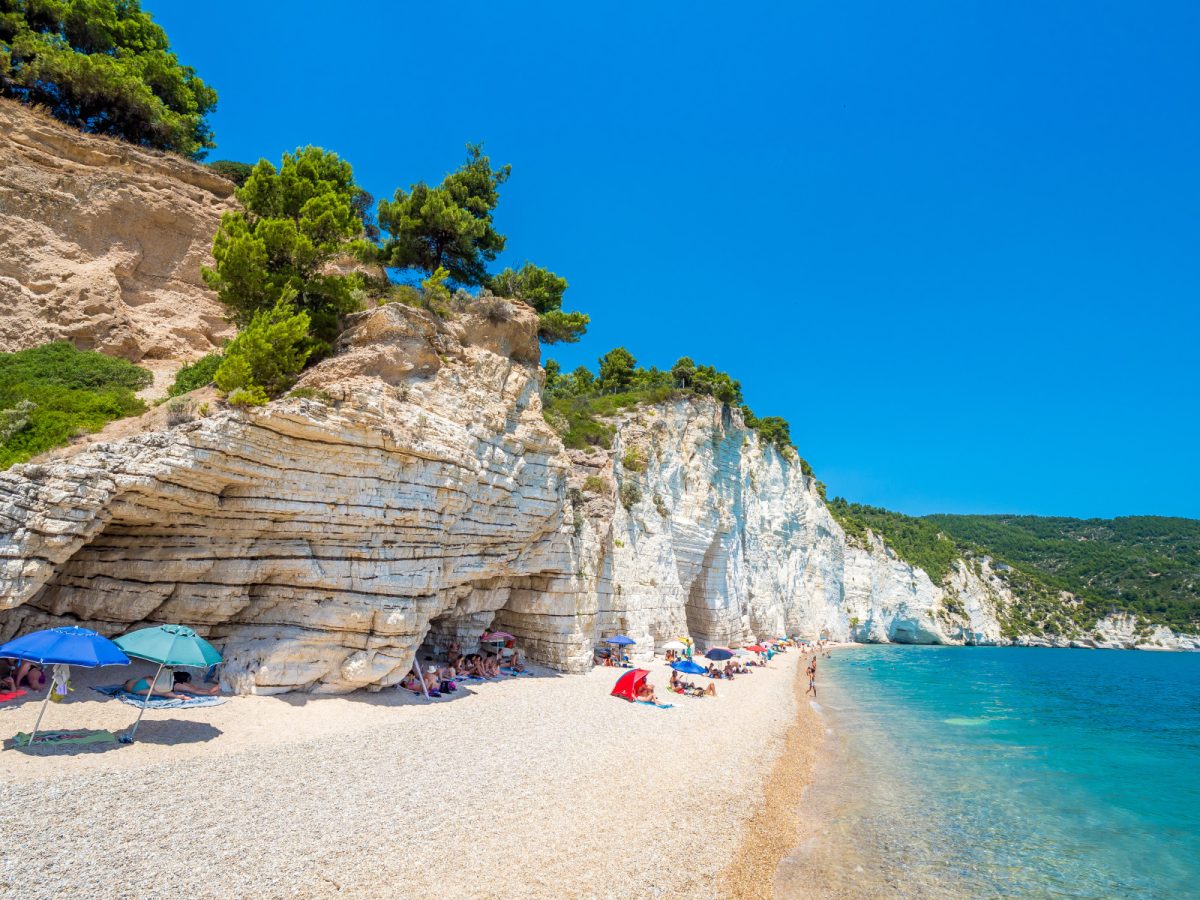
Puglia and Calabria offer visitors a range of fun experiences by the sea. From relaxing on sandy shores to exciting water adventures, these regions have something for everyone.
Relaxing in Puglia’s Beaches
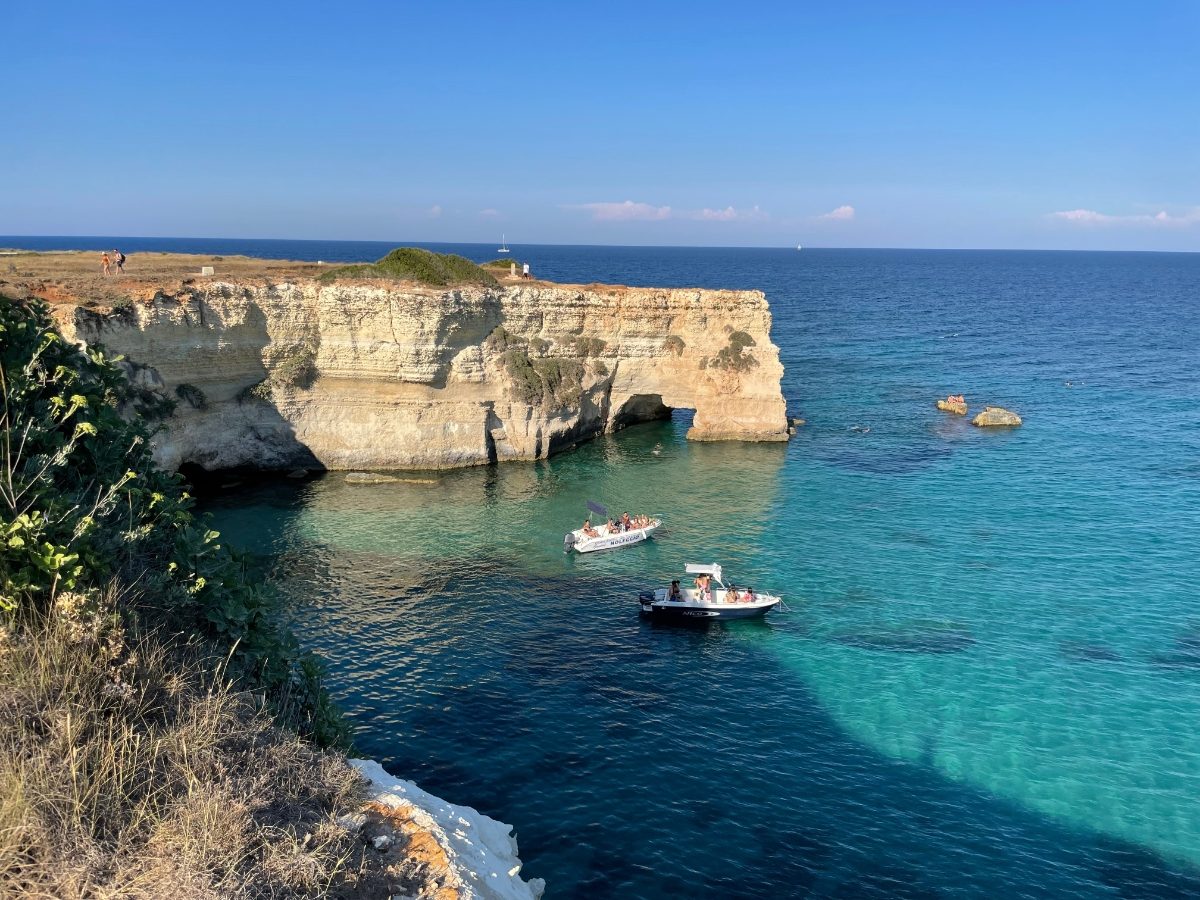
Puglia boasts some of Italy’s most stunning beaches. The coastline stretches for miles, dotted with soft sand and crystal-clear waters. Otranto’s beach is a local favorite, with its turquoise sea and white pebbles. It’s perfect for sunbathing or taking a dip.
For a quieter spot, head to Torre dell’Orso. This beach has golden sand and tall cliffs. It’s great for families, with shallow water and nearby cafes. Prices for beach chairs run about €10-15 per day.
Don’t miss Porto Cesareo. Its long stretch of sand feels like the Caribbean. The water is shallow for quite a distance, making it ideal for kids. Bring a picnic or try fresh seafood at a beachside restaurant.
Adventures in Calabria’s Waters
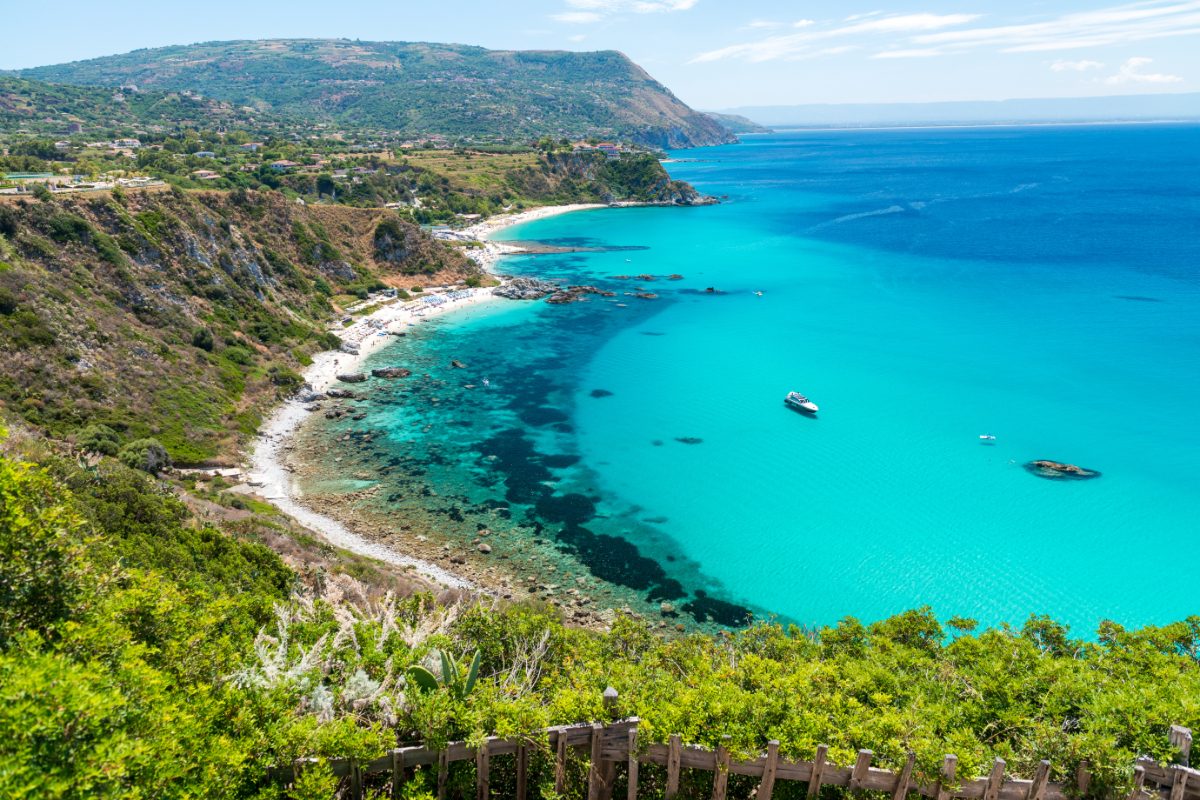
Calabria’s coast offers more than just beaches. It’s a paradise for water sports enthusiasts. The area around Vibo Valentia is known for excellent diving. You can explore underwater caves and see colorful fish. A guided dive costs around €50-80.
Gioia Tauro is great for windsurfing and kitesurfing. The strong breezes make it perfect for catching waves. Rentals and lessons are available for about €30-50 per hour.
For a unique experience, try a boat tour to the Aeolian Islands from Tropea. You’ll see stunning views of the coast and maybe even spot dolphins. Tours start at €60-80 per person.
Calabria’s beaches are also worth visiting. Capo Vaticano has clear water and rocky coves. It’s less crowded than some other spots. Bring water shoes for the pebbles.
See Related: Rails with Views: Most Breathtaking Train Rides in Italy
Frequently Asked Questions
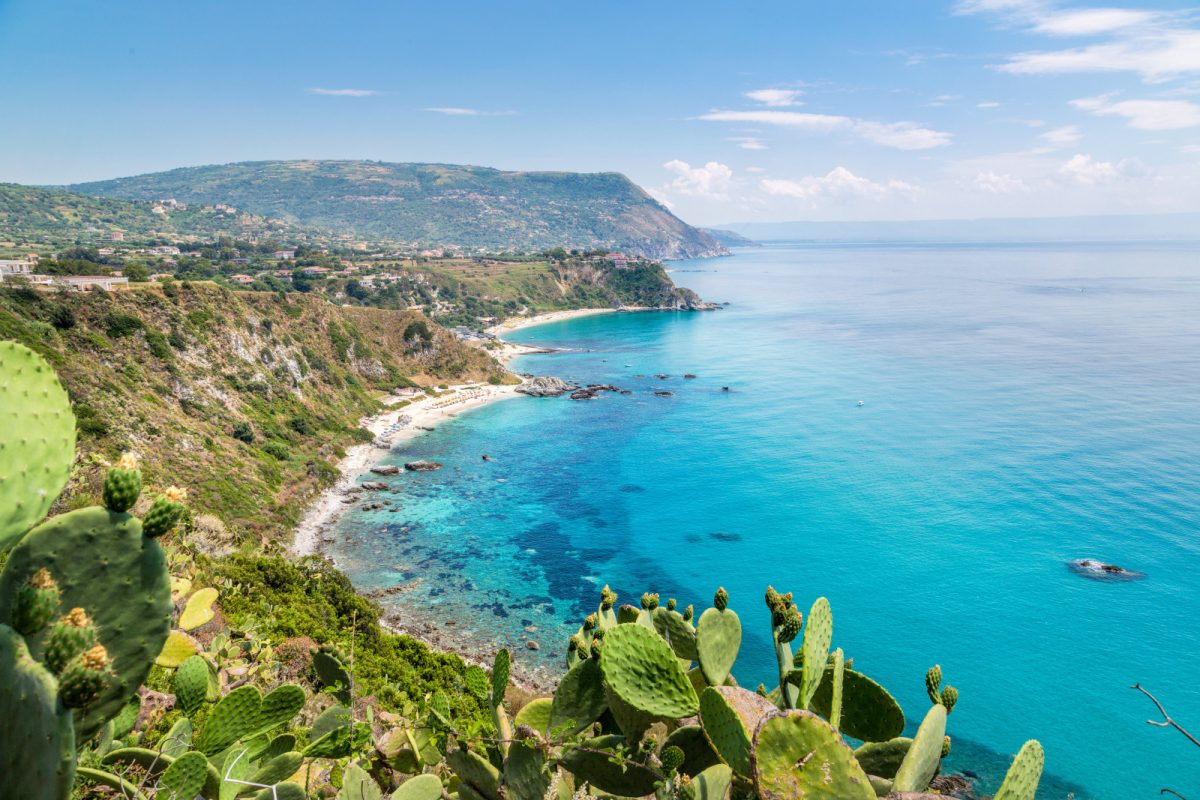
Puglia and Calabria offer unique experiences for travelers exploring southern Italy. Let’s dive into some common questions about these two captivating regions.
What are the top tourist attractions in Puglia and Calabria during a road trip?
Puglia’s must-see spots include the white-washed town of Ostuni, the trulli houses of Alberobello, and the baroque city of Lecce. In Calabria, don’t miss the stunning beaches of Tropea, the ancient Greek ruins of Locri, and the charming hilltop village of Gerace.
A road trip through Puglia should include a stop at the Castel del Monte, a UNESCO World Heritage site. In Calabria, make sure to visit the Riace Bronzes at the National Museum of Magna Graecia in Reggio Calabria.
How do culinary experiences differ between Puglia and Calabria?
Puglia is famous for its orecchiette pasta, burrata cheese, and olive oil. It also has many seafood and vegetable-based dishes. Conversely, Calabria is known for its spicy nduja sausage, red onions from Tropea, and bergamot citrus.
Both regions produce excellent wines. Try Primitivo or Negroamaro in Puglia, and Cirò in Calabria. Expect to pay around €25-35 for a nice meal in a local trattoria in either region.
What cultural differences should I expect when visiting Puglia compared to Calabria?
Puglia has a more developed tourism infrastructure and is busier, especially in popular towns like Polignano a Mare. Calabria feels more off-the-beaten-path and can be quieter, especially inland.
In Puglia, you’ll see more influences from Greek and Arab cultures. Calabria has strong Greek roots and a distinct local dialect. Both regions are known for their warm hospitality, but Calabria can feel a bit more traditional.
Can you highlight the differences in the typical landscapes of Puglia versus Calabria?
Puglia is characterized by its flat, sun-baked countryside dotted with olive groves and vineyards. The coastline alternates between sandy beaches and dramatic cliffs. The iconic trulli houses with conical roofs are unique to this region.
Calabria is more mountainous, with the Aspromonte and Sila ranges dominating the interior. Its coastline is rugged and dramatic, with crystal-clear waters. Inland, you’ll find lush forests and national parks.
What are the best times of year to visit Puglia and Calabria for weather and tourism?
The best time to visit both regions is from May to June or September to October. You’ll enjoy warm temperatures (around 20-25°C) and fewer crowds. July and August can be very hot (30°C+) and crowded, especially on the coasts.
Winter in Puglia is mild, making it a good off-season destination. Calabria can get chilly in winter, but it’s a great time to ski in the Sila mountains.
How does the quality and style of beaches compare between Puglia and Calabria?
Puglia’s beaches are generally sandy and more developed, with beach clubs and facilities. Popular spots like Polignano a Mare can get crowded in summer. Prices for sun loungers range from €15-30 per day.
Meanwhile, Calabria’s beaches are often more secluded and pristine. You’ll find a mix of sandy and pebbly shores. The Tropea area is famous for its turquoise waters and dramatic cliffs. Beach facilities are less common, but prices are generally lower than in Puglia.

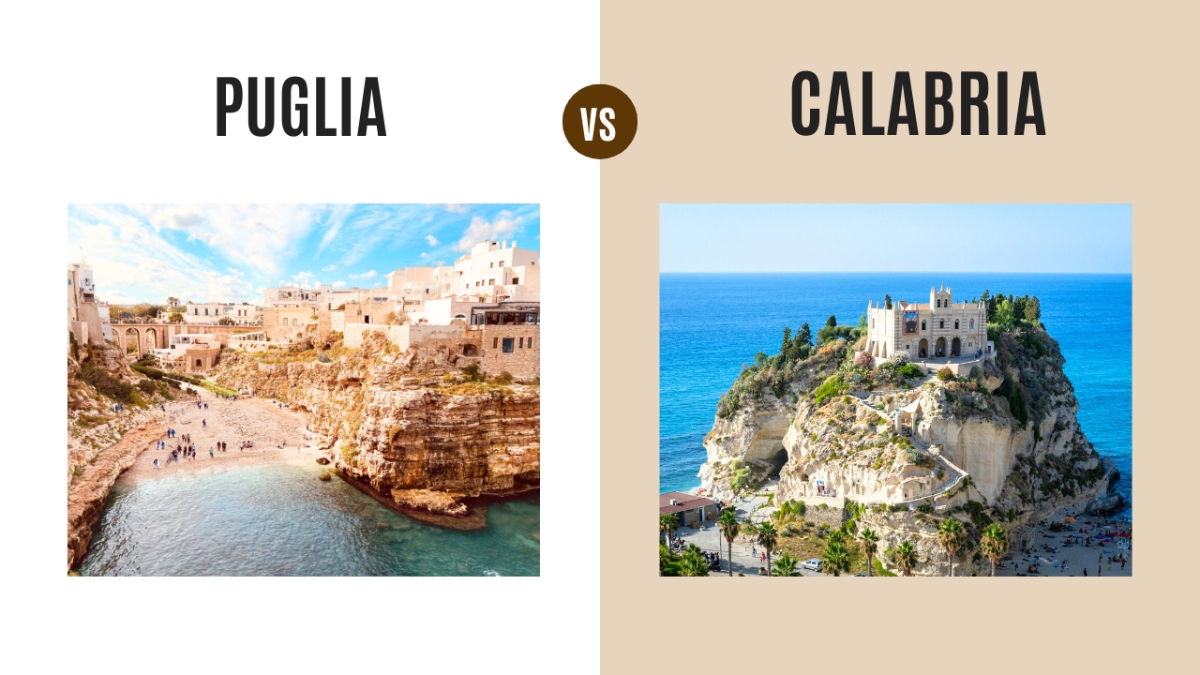
0 Comment